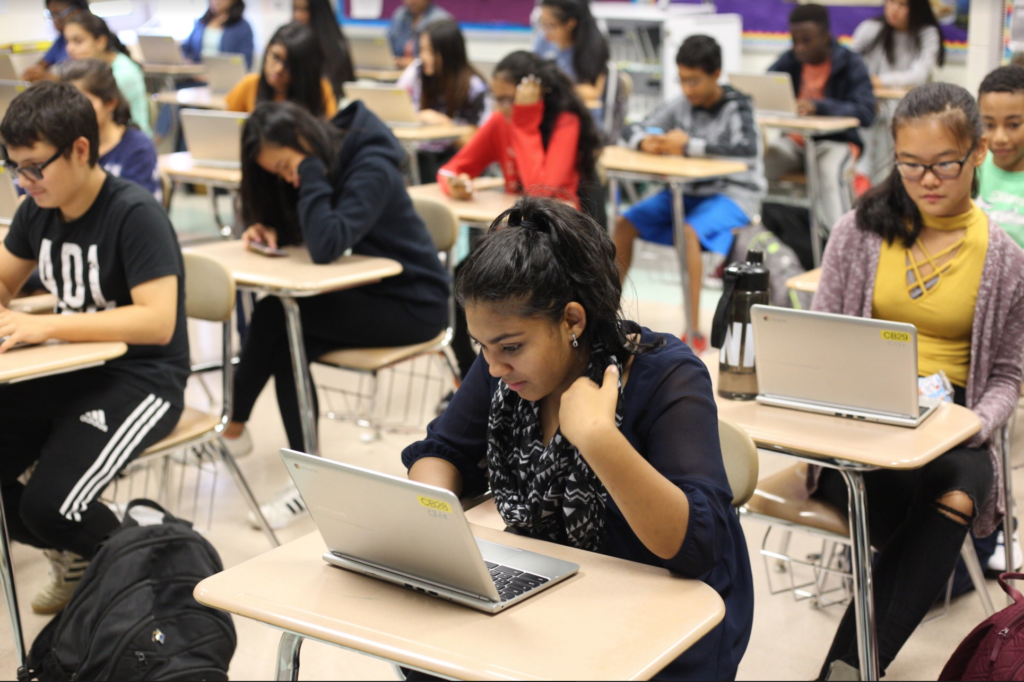
Prolonged issues relating to the school’s WiFi connectivity and quality have led the administration of Townsend Harris to limit access to the DOE-provided WiFi on a prioritized basis. The limitation put to WiFi access with the start of the new school year all prevents students from having access to free, reliable internet for their personal devices. Recently, WiFi— although slow– was accessible to all.
The issue, however, does not find its roots in the school, but rather in the DOE itself. “The school doesn’t control the WiFi; the DOE does,” explained Townsend Harris’s technology coordinator John Tsai. He shed light on the current status of the WiFi, saying, “The bandwidth of current DOE WiFi is very low and it might take a long time to fix it.” Upgrades have already been made recently to fully maximize the WiFi capacity in the school. However, other aspects of the WiFi that cannot be as easily fixed contribute to the lack of reliable Wifi for everyone in the school.
“There are several factors that limit data available to students. The first is the capacity of the building to sort of receive the data streams from the DOE,” explained Principal Brian Condon. With the school having enormous demands for access, the bandwidth available and the technology to deliver what’s necessary aren’t where they need to be to support the entire community. Mr. Condon compared the issue to utilities coming through pipes, saying “a pipe can only hold so much.” The bandwidth issue works the same way. With nearly every student now using phones, computers, iPads, and more to connect, there simply isn’t the capacity. In order to solve this problem, the building’s infrastructure will need work.
The only way to temporarily resolve the issue, the administration says, is to limit the amount of people on it for now based upon necessity. This problem became prominent last year, as demonstrated by complaints and problems with working on college transcripts with Naviance and other academic needs.
As of now, the only people with WiFi access and privileges are administrators, faculty, and staff. “I can’t risk the crashing or slowing down of the systems, especially during this very important period of time where a lot of people are applying for early decision,” said Mr. Condon. This action limits the division of bandwidth, thus allowing for quicker and more efficient Internet speed for the school’s most important functions.
After the administration, the password must be distributed according to academic priority. SU President Kathy Ling, attended the most recent SLT meeting, where the issue was discussed. She said, “The school’s plan is to eventually release the WiFi steadily after college applications are submitted.” The first group to gain this access was comprised of research classes as well as other classes who use the school’s Chromebooks, which are connected to the DOE’s server, and can not function without the Internet. Their use, as well as the use of THHS’ iPads in past years, has contributed to the heavy wifi usage.
At the news of Townsend’s free WiFi unavailability, students are experiencing disappointment. “On the first day of school, I immediately tried to connect my laptop to the WiFi with the information I attained last year. Obviously, it didn’t work,” recounted sophomore Ryla Pasaoa. “After visiting the library, I was told that the WiFi password is no longer available for student use.”
Other students expressed their irritation, reasoning that the lack of WiFi makes it hard for them to get their work done. “I typically used my iPad during classes; and with WiFi, I can go on Google Drive and access things,” mentioned junior Jessica Siguencia. “Having WiFi is more of a need than a want because students rely on their electronic devices to have school WiFi… WithoutWiFi, students are at more of a disadvantage for not being able to easily access tools to help them online.”
Sophomore Jaime Tran expressed her difficulty, saying “…the lunchroom is the most important time for me to text my parents and let them know if I need to stay late… I can’t get any connection in the lunchroom, and the trouble with the WiFi makes it really hard to work online.”
Adding to connectivity issues is a new cell phone policy, which allows students to use their cellular devices in the cafeteria as well as during the morning in the auditorium. However, without access to the school’s free WiFi, students are not able to take advantage of the policy’s safe havens for utilization due to the unavoidable action of using their limited cellular data.
Those with unlimited data plans, such as sophomore Annie Lin, also face problems. “Even though we [the students] are allowed to have our phones out, most of the time we don’t have WiFi in these areas [the auditorium and the cafeteria],” she reasoned. “And since there’s a strict no phones policy, I can’t take out my phone to turn on my hotspot for my laptop for schoolwork, which is a hassle.”
In the past, students have had “full access to the DOE WiFi,” according to the minutes from an SLT meeting on March 13, 2014. Although this was not to be used for calling or texting, theWiFi enabled students to connect to the Internet for school-appropriate online access.
“Other schools don’t even give out WiFi,” said Librarian Arlene Laverde. “We’re trying our best… trying to look for some kind of balance that will help everybody.”
Photo by Matthew Neil




























